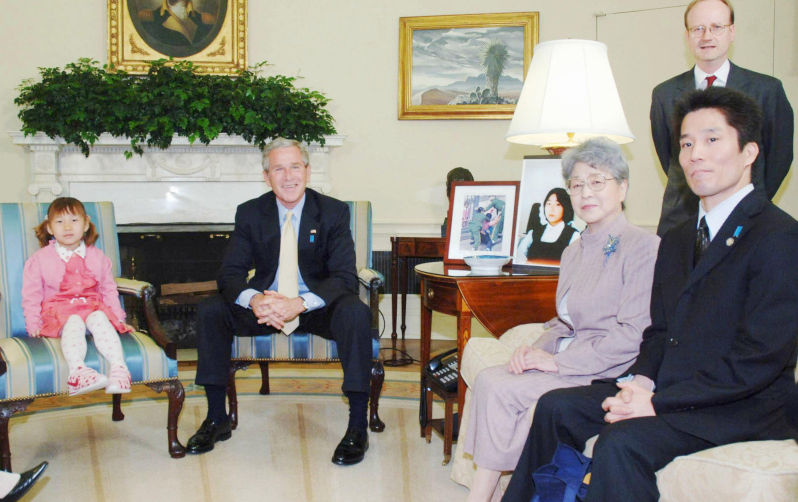To break the deadlock in Japan-North Korea relations, Japan’s new Prime Minister Shigeru Ishiba, has proposed liaison offices in the capitals of both countries to resolve the poisonous abductees issue – the fate of Japanese citizens abducted by North Korea in the seventies and eighties.
But Japan’s rightwing, using powerful abductee family organisations, seems determined to kill the proposal.
This is despite North Korea’s move in 2002 to return what it said were the only survivors out of the 13 its agents had abducted – two married couples and the wife of a US military defector.
To mark their release both sides had agreed to a Pyongyang Declaration in which diplomatic relations would be established, Japan would provide significant economic aid and North Korea, in addition to making a deep apology for the abductions, had promised a moratorium on rocket testing.
Japan’s prime minister, Junichiro Koizumi, went to Pyongyang to sign the Declaration and meet the North Korea leader, Kim Jong-Il.
But the ink was hardly dry on the Declaration when the then deputy chief cabinet director (and later prime minister), the very rightwing Shinzo Abe, who had accompanied Koizumi to Pyongyang, came back to Japan saying he had evidence North Korea was holding many more abductees, possibly more than 800.
He said that there should be no move to establish relations with North Korea until all the people abducted by the North Korean regime had been accounted for.
Tokyo cooperated by producing a list of seventeen Japanese citizens who had disappeared in North Korea, while noting there could be many more. They had to be searched for.
At the centre of the dispute was the fate of one abductee, Megumi Yokota, taken at age 13 by North Korean agents from a beach in western Japan in 1977 – possibly because she had seen another abduction.
Organisations of abductee families largely funded by Tokyo have used her as the symbol of the abductee issue. But North Korea insists she died in 1994 after marrying and giving birth to a daughter, Kim Eun Gyong.
Regardless, songs, manga(comics), photos and other mementos of Megumi were assembled, and together with the grieving parents, Sakie and Shigeru Yokota, were taken and shown to world leaders, including George W Bush, in a bid to promote the abductee issue.
North Korea responded by saying the parents could come to North Korea and talk to Megumi’s daughter. But Tokyo said no; that the invitation was part of some dubious North Korean scheme.
Eventually Tokyo had to agree to a meeting with the daughter, provided it was in a third country. But in the report made by the parents in 2014 after the meeting (in Mongolia) strangely there was no mention of Megumi, or any other claimed abductees.
By chance I happened shortly after to see Megumi’s mother, Sakie, at yet another of the Tokyo gatherings to publicise the abductee issue and to ask her why there had been no mention of Megumi in the report.
She replied with some dignity that she now saw her duty to be giving help to other abductee families. In other words, Megumi was no longer alive.
Meanwhile all mention of the Pyongyang Declaration has disappeared. Relations with North Korea remain deadlocked. The abductee family organisations continue vigorously to press the abductee problem, and to oppose one viable proposal to solve the problem.
Most of the seventeen on Tokyo’s list of the missing would now be in their eighties and of no use to any North Korean regime. One would be 100.
For more on this topic, P&I recommends:
Gregory Clark was the first postwar Australian diplomat trained in Chinese, with postings to Hong Kong, Moscow and the UN before retiring in protest against the Vietnam War. After PhD studies at the ANU he became Japan correspondent for The Australian. A spell in Canberra’s Prime Ministers department led to professorships at Tokyo’s Sophia University and emeritus president of Tama University, Tokyo, before becoming co-founder of the very successful English language Akita Kokusai Daigaku. He has now retired to Latin America (Peru) and Kiwi fruit growing in Boso peninsular south of Tokyo.
His works include ‘In Fear of China’ (1969) and several books in Japan on education and foreign policy.
He used to speak Chinese and Russian with fluency. He now speaks Japanese and Spanish.

